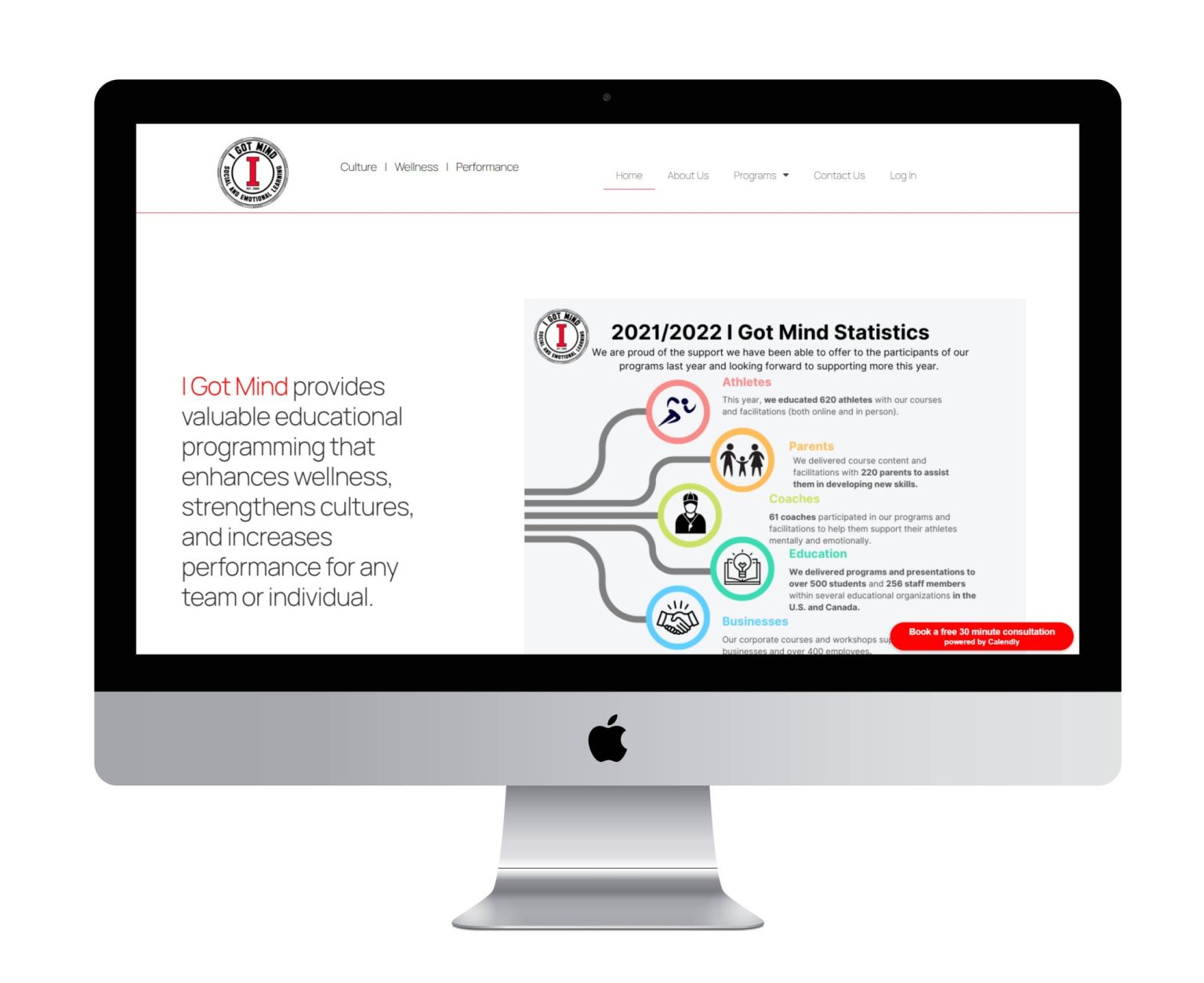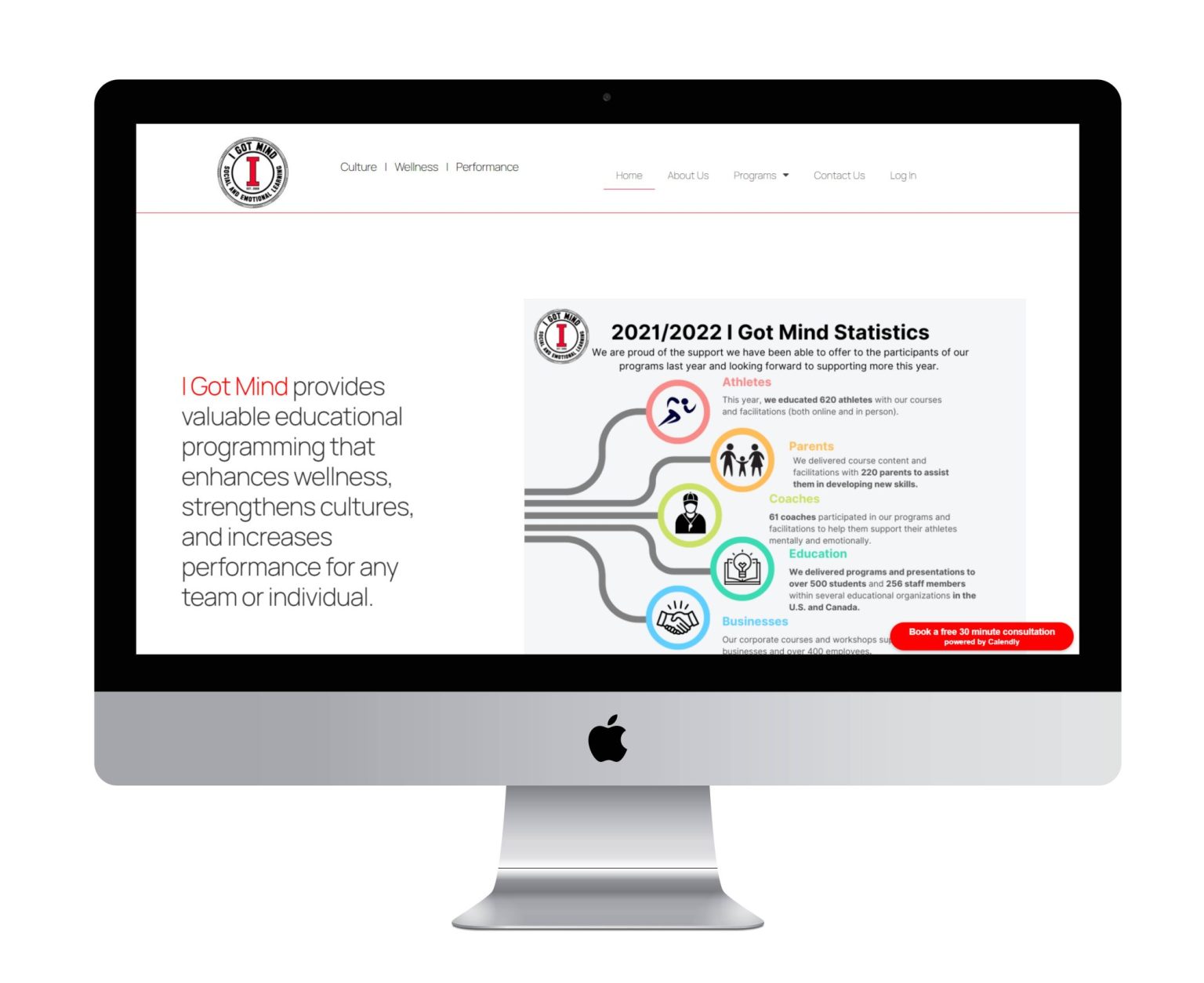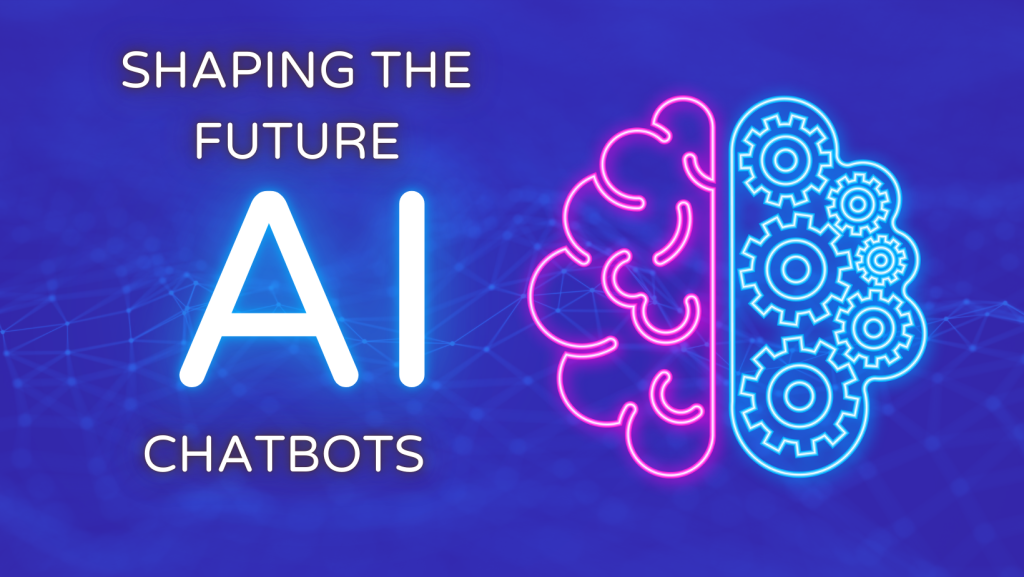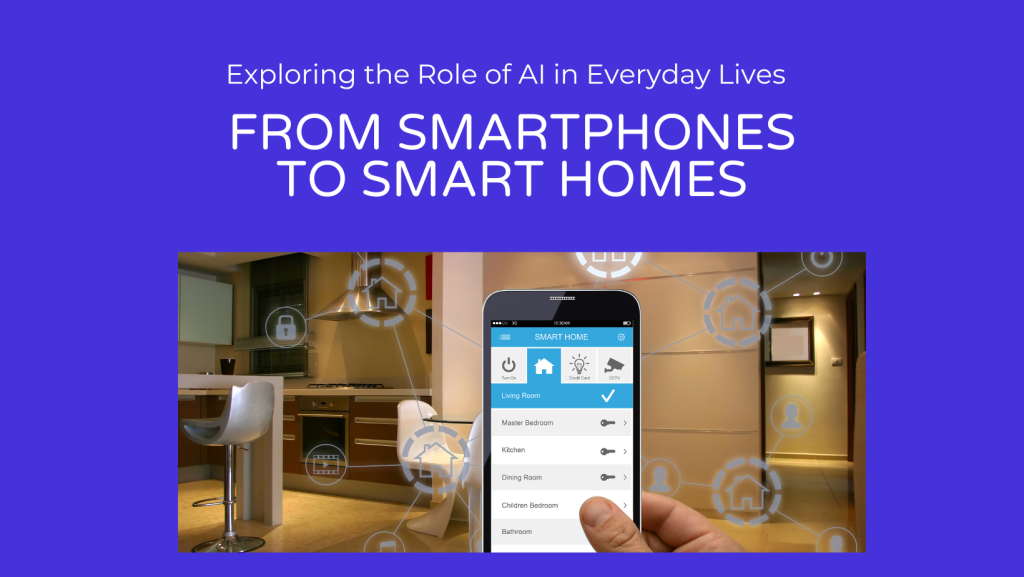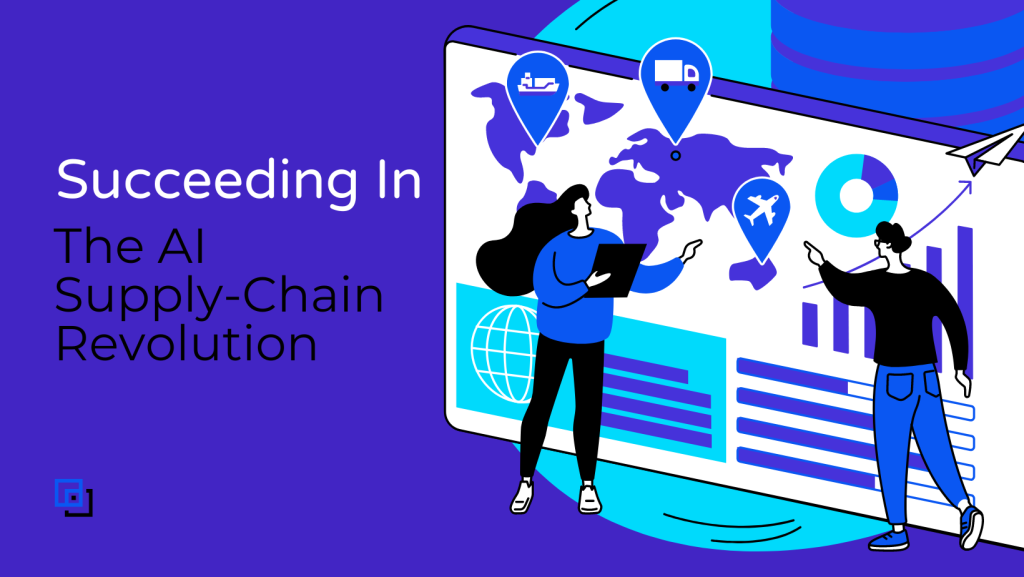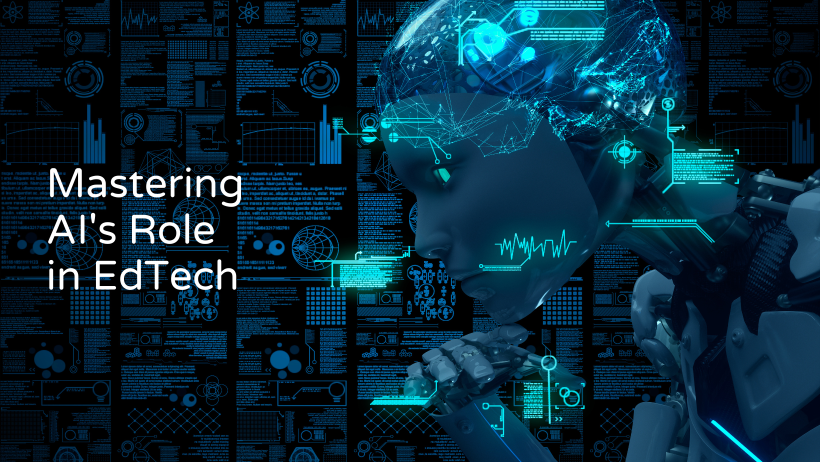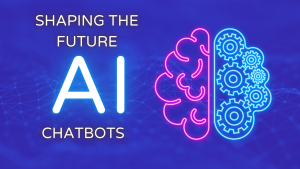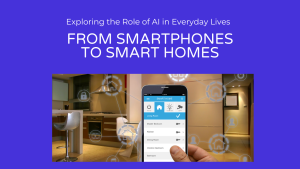Introduction
The use of AI in EdTech is revolutionizing education by enhancing learning experiences for students and teachers. AI solutions offer personalized, interactive, and efficient learning experiences, with the EdTech industry projected to grow at over 10% annually from 2023 to 2032.
AI in EdTech aims to improve learning outcomes and engagement by providing tailored experiences that meet individual student needs. Adaptive learning algorithms and intelligent tutoring systems enable personalized paths and real-time feedback.
Beyond personalized learning, AI in EdTech transforms education through learning analytics, virtual reality, augmented reality, and chatbots. These technologies provide insights for instructional strategies, create immersive learning environments, and offer instant support to students and teachers.
The Evolution of AI in Education
Over time, AI has been essential in changing education. A significant progress is adaptive learning. AI adjusts content based on performance, aiding students to learn at their speed with personalized materials.
AI also helps in creating educational content by analyzing data for trends. This assists educators in making engaging materials like videos and simulations that improve learning.
Furthermore, AI enhances online learning accessibility. Learners can now access education remotely anytime. AI tools offer a smooth learning experience tailored to students’ preferences and styles.
Tracing the Roots: How AI Transformed Learning
The change in learning with AI started from personalized teaching. Traditional methods often ignore each student’s needs. AI customizes content based on each student’s abilities and styles. This personalized way of learning uses smart systems to adjust content difficulty for students. These systems act as tutors, giving tailored support and feedback to students individually.
AI in personalized learning boosts engagement, retention, and allows self-paced learning. Advanced AI offers more customized learning experiences, ensuring every student reaches their potential.
Current EdTech Landscape: AI’s Growing Influence
AI’s influence in the EdTech landscape is growing rapidly. EdTech platforms are increasingly integrating AI technologies to enhance the learning process and improve educational outcomes. AI plays a key role in personalizing the learning experience, analyzing data to provide personalized recommendations, and creating adaptive learning paths.
AI-powered chatbots are becoming common in EdTech platforms, providing instant support and assistance to students. These chatbots can answer questions, offer explanations, and provide feedback, helping students navigate the learning process more effectively.
AI is also transforming the assessment process in EdTech. Automated grading and feedback systems use AI algorithms to evaluate student work, providing instant feedback and reducing the workload for teachers. This allows teachers to focus more on instructional activities and personalized support for students.
The role of AI in EdTech goes beyond individual learning. AI can analyze data from multiple sources to identify patterns and trends, helping educators make data-driven decisions to improve teaching strategies and curriculum design. AI-powered learning platforms can also provide insights into student engagement and performance, allowing educators to tailor their instructional approaches to meet the unique needs of each student.
Decoding AI: Understanding Its Components in EdTech
To fully understand the role of AI in EdTech, it is important to decode its components. Two key components of AI in EdTech are natural language processing (NLP) and machine learning (ML).
Natural language processing enables computers to understand and interpret human language. In the context of EdTech, NLP allows AI-powered chatbots to understand student queries and provide relevant responses. NLP also enables the analysis of text-based data, such as student essays or feedback, to gain insights into student performance and learning needs.
Machine learning is a subset of AI that focuses on enabling computers to learn and improve from experience without being explicitly programmed. In EdTech, machine learning algorithms can analyze large datasets to identify patterns and make predictions. For example, machine learning algorithms can analyze student performance data to identify areas where students may need additional support or intervention.
By understanding the components of AI in EdTech, educators and developers can leverage these technologies to create more effective and personalized learning experiences for students.
Machine Learning & Adaptive Learning Platforms
Machine learning plays a crucial role in the development of adaptive learning platforms in EdTech. These platforms use AI algorithms to analyze data and personalize the learning experience for each student. Here are some key aspects of machine learning in adaptive learning platforms:
- Learning Paths: Machine learning algorithms analyze student performance data to create personalized learning paths. These learning paths adapt to each student’s needs and progress, providing targeted content and activities.
- Adaptive Learning: Machine learning algorithms adjust the difficulty, pace, and type of content based on students’ individual needs and abilities. This ensures that students are challenged at the right level and can progress at their own pace.
- Customization: Machine learning enables adaptive learning platforms to customize content and activities for each student, ensuring that the learning experience is tailored to their unique needs and preferences.
- Continuous Improvement: Machine learning algorithms continuously analyze student data to improve the effectiveness of the adaptive learning platform. This allows the platform to refine its recommendations and adapt to the changing needs of students over time.
By harnessing the power of machine learning, adaptive learning platforms in EdTech can provide personalized and effective learning experiences for students, improving engagement and learning outcomes.
Natural Language Processing for Personalized Feedback
Natural language processing (NLP) plays a crucial role in providing personalized feedback in EdTech. AI-powered systems use NLP algorithms to analyze and interpret written or spoken language, allowing them to provide instant feedback to students. Here are some key aspects of NLP for personalized feedback:
- Instant Feedback: NLP algorithms can analyze student responses in real-time and provide immediate feedback. This enables students to receive feedback on their work and make corrections or improvements right away.
- Language Understanding: NLP algorithms can understand and interpret the meaning of student responses, allowing them to provide specific and targeted feedback. This goes beyond simple error detection and correction, enabling AI systems to offer more meaningful feedback based on the content and context of student work.
- Adaptive Guidance: NLP algorithms can provide personalized guidance based on the specific needs and challenges of each student. This could involve offering additional explanations, suggesting relevant resources, or providing step-by-step instructions to help students overcome difficulties.
- Natural Language Generation: NLP algorithms can generate natural language responses that mimic human language. This allows AI systems to provide feedback that feels more personalized and human-like, enhancing the learning experience for students.
By leveraging the power of NLP, EdTech platforms can provide students with instant, personalized feedback that promotes deeper understanding and supports their learning journey.
Techwink Services: Pioneering Custom AI Solutions in EdTech
Techwink Services is a leading provider of custom AI solutions in the EdTech industry. With a focus on developing innovative AI software, Techwink is revolutionizing the way education is delivered and experienced. By leveraging the power of AI, Techwink aims to enhance learning outcomes, improve student engagement, and empower educators with intelligent tools.
Techwink’s custom AI software is designed to meet the unique needs and challenges of educational institutions and companies operating in the EdTech space. The company’s expertise in AI technologies, such as natural language processing and machine learning, enables them to create tailored solutions that address specific requirements and deliver tangible results.
Techwink’s custom AI software offers a range of benefits for EdTech companies, including increased efficiency, improved educational outcomes, and a competitive advantage in the industry. By partnering with Techwink, educational institutions and EdTech companies can unlock the full potential of AI and transform the way education is delivered and experienced.
The Process: Developing Tailor-Made AI Tools for Education
Techwink follows a meticulous process when developing tailor-made AI tools for education. The process involves the following key steps:
- Needs Assessment: Techwink works closely with educational institutions and EdTech companies to identify their specific needs and challenges. This involves understanding their goals, target audience, and desired outcomes.
- Solution Design: Based on the needs assessment, Techwink designs a custom AI solution that addresses the specific requirements of the client. This includes determining the functionalities, features, and technologies that will be incorporated into the AI tool.
- Development and Testing: Techwink’s team of AI experts develops and tests the AI tool, ensuring its functionality, accuracy, and usability. Rigorous testing is conducted to ensure that the AI tool meets the client’s requirements and performs effectively.
- Implementation and Integration: Techwink collaborates with the client to implement and integrate the AI tool into their existing educational infrastructure. This involves seamless integration with other systems and platforms to ensure a smooth user experience.
- Ongoing Support and Maintenance: Techwink provides ongoing support and maintenance for the AI tool, including software updates, technical assistance, and customer service. This ensures that the AI tool continues to perform optimally and meets the evolving needs of the client.
By following this process, Techwink delivers tailor-made AI tools that enhance educational outcomes, improve student engagement, and empower educators with intelligent tools.
Future possibilities in edtech with TechwinK
TechwinK envisions reshaping the future of education through cutting-edge AI solutions. By intertwining artificial intelligence with educational technology, TechwinK paves the way for innovative learning experiences. Its potential lies in personalized learning paths, intelligent tutoring systems, and immersive virtual environments. With a focus on student engagement and tailored learning materials, TechwinK anticipates revolutionizing how education is delivered and accessed. The integration of AI promises to enhance educational outcomes and cater to the diverse needs of learners, opening new horizons in the edtech industry.
The Impact of AI on Different Stakeholders in Education
The integration of AI in education has a significant impact on different stakeholders, including students and teachers. AI technologies provide unique benefits for each group, improving student performance and supporting teachers in their instructional efforts.
For students, AI enables personalized learning experiences tailored to their individual needs and abilities. This leads to increased engagement, improved retention rates, and better academic performance. AI-powered tools, such as intelligent tutoring systems and adaptive learning platforms, provide real-time feedback and support, helping students overcome challenges and achieve their full potential.
For teachers, AI offers valuable support in various ways. AI-powered platforms automate routine tasks, such as grading assignments and generating progress reports, allowing teachers to focus more on instructional activities and personalized support for students. AI can also provide insights and recommendations based on student data, helping teachers make data-driven decisions and improve their instructional strategies.
Overall, AI in education has the potential to transform the learning experience for both students and teachers, enhancing educational outcomes and improving the quality of education.
Enhancing Student Engagement and Learning Outcomes
AI technologies play a key role in enhancing student engagement and improving learning outcomes in education. Here are some ways in which AI achieves these goals:
- Personalized Learning: AI enables personalized learning experiences, tailoring educational content and activities to meet the unique needs and abilities of individual students. This personalized approach to learning increases student engagement and motivation, leading to improved learning outcomes.
- Adaptive Learning: AI-powered adaptive learning platforms adjust the difficulty, pace, and type of content based on each student’s individual progress and performance. This ensures that students are challenged at the appropriate level and can progress at their own pace, leading to better understanding and retention of knowledge.
- Real-Time Feedback and Support: AI-powered tools, such as intelligent tutoring systems and chatbots, provide instant feedback and support to students. This immediate feedback helps students identify and address areas of difficulty, promoting deeper understanding and improved learning outcomes.
By leveraging AI technologies, educational institutions can create learning environments that actively engage students, promote personalized learning experiences, and ultimately improve learning outcomes.
Empowering Teachers with Intelligent Tools
AI technologies also empower teachers with intelligent tools that enhance their instructional efforts and support their professional development. Here are some ways in which AI empowers teachers:
- Automated Administrative Tasks: AI-powered platforms automate routine administrative tasks, such as grading assignments and generating progress reports. This frees up teachers’ time, allowing them to focus more on instructional activities and personalized support for students.
- Intelligent Tutoring Systems: AI-powered intelligent tutoring systems serve as personal tutors for students, providing individualized support and feedback. These systems use AI algorithms to identify areas where students may be struggling and offer targeted guidance to help them overcome challenges.
- Professional Development Support: AI technologies can provide teachers with access to relevant research publications, advice on teaching practices, and collaborative learning groups. This supports ongoing professional development and encourages the implementation of effective instructional methods.
By providing teachers with intelligent tools, AI enables them to deliver high-quality instruction, personalize learning experiences, and support student success.
Breakthroughs in AI: Innovative Features in Learning Platforms
AI continues to drive breakthroughs in the development of innovative features in learning platforms. Here are some examples of the innovative features enabled by AI:
- Generative AI: AI-powered generative models can create learning materials, such as interactive videos and simulations, that enhance the learning experience and make educational content more engaging and accessible.
- Personalized Recommendations: AI algorithms analyze student data to provide personalized recommendations for learning materials, resources, and activities. This ensures that students have access to relevant and tailored content that matches their individual needs and interests.
- Adaptive Assessments: AI-powered adaptive assessments adapt to each student’s performance and provide targeted questions and activities based on their level of understanding. This ensures that students are challenged at the appropriate level and receive feedback that supports their learning journey.
These breakthroughs in AI-driven features in learning platforms contribute to creating immersive and effective learning experiences, allowing students to unlock their full potential.
Automated Grading and Feedback Systems
AI-powered automated grading and feedback systems are transforming the traditional grading process in education. Here are the key advantages of these systems:
- Efficiency: Automated grading systems save teachers significant time and effort by automating the process of grading assignments and providing feedback. This allows teachers to focus more on instructional activities and personalized support for students.
- Consistency: AI-powered grading systems ensure consistent and objective grading, reducing the potential for bias and subjectivity in the grading process. This leads to fair and equitable assessment of student work.
- Instant Feedback: Automated grading systems provide instant feedback to students, allowing them to understand their strengths and areas for improvement in real-time. This immediate feedback promotes deeper understanding and supports student learning.
- Data Insights: AI-powered grading systems generate data insights that can inform instructional strategies and curriculum design. By analyzing student performance data, teachers can identify patterns and trends, gaining valuable insights into student learning needs and adjusting their teaching approaches accordingly.
AI-powered automated grading and feedback systems enhance the efficiency, consistency, and effectiveness of the grading process, benefiting both teachers and students.
AI-Driven Content Creation and Curation
AI technologies are revolutionizing content creation and curation in education. Here are some ways in which AI drives these processes:
- Customizable Content: AI algorithms can analyze large amounts of data to create customizable educational content that meets the specific needs and preferences of individual learners. This allows for personalized and tailored learning experiences.
- Content Curation: AI-powered platforms can curate educational resources from a wide range of sources, ensuring that learners have access to high-quality and relevant content. AI algorithms can identify the most valuable and engaging resources, saving teachers time and effort in selecting appropriate materials.
- Automated Content Production: AI can automate the process of creating educational content, such as lesson plans, interactive learning materials, and curating educational resources. This streamlines the content creation process and enables educators to focus on instructional activities.
AI-driven content creation and curation enhance the accessibility and quality of educational content, providing learners with engaging and relevant materials.
Challenges and Ethical Considerations in AI-Driven Education
While AI has the potential to revolutionize education, there are also challenges and ethical considerations that need to be addressed. Some key challenges include:
- Privacy Concerns: The use of AI in education involves the collection and analysis of large amounts of student data. This raises concerns about data privacy and security. It is important for educational institutions and EdTech companies to ensure that student data is protected and used responsibly.
- Ethical Considerations: AI algorithms may be subject to biases and may reinforce inequalities and prejudices in the classroom. It is essential to address these ethical considerations and ensure that AI systems are designed and implemented in a way that promotes fairness and inclusivity.
By addressing these challenges and ethical considerations, educators and developers can harness the potential of AI in education while ensuring the protection of student privacy and promoting ethical practices.
Addressing Privacy Concerns and Data Security
Addressing privacy concerns and data security is crucial when implementing AI in education. Here are some key considerations:
- Data Protection: Educational institutions and EdTech companies must prioritize the protection of student data by implementing robust security measures and complying with data protection regulations.
- Consent and Transparency: It is important to obtain informed consent from students and their families regarding the collection and use of their data. Transparency about data practices and policies is also essential to build trust with stakeholders.
- Data Governance: Establishing clear data governance practices, including data storage, access controls, and data sharing agreements, helps ensure the responsible handling and use of student data.
- Ethical Use of Data: Educators and developers should adhere to ethical guidelines and principles when using student data for educational purposes. This includes anonymizing data, minimizing data collection, and using data for the sole purpose of improving the learning experience.
By addressing privacy concerns and ensuring data security, educational institutions and EdTech companies can build trust with stakeholders and create a safe and secure learning environment for students.
Ensuring Equity and Accessibility in AI-Enhanced Learning
AI-enhanced learning has the potential to promote equity and accessibility in education. Here are some ways to ensure equity and accessibility:
- Universal Design: Designing AI-enabled learning experiences with a focus on universal design principles ensures that educational materials and platforms are accessible to all learners, regardless of their abilities or disabilities.
- Personalization for Unique Needs: AI algorithms can tailor educational content and experiences to meet the unique needs of individual learners, ensuring that each student has equal opportunities for success.
- Bridging the Digital Divide: It is important to address the digital divide by providing equal access to technology and internet connectivity for all students. This includes ensuring that AI-enabled learning platforms are accessible on a wide range of devices and internet connections.
By prioritizing equity and accessibility in AI-enhanced learning, educational institutions can ensure that all students have equal opportunities to thrive and succeed.
The Future of AI in EdTech: Trends and Predictions
The future of AI in EdTech is filled with exciting trends and possibilities. Here are two key trends to watch out for:
- Virtual Reality: Virtual reality (VR) technologies create immersive and interactive learning environments that enhance the educational experience. VR allows students to explore and interact with educational content in a virtual world, making learning more engaging, memorable, and effective.
- AI Tutors: AI-powered virtual tutors are becoming increasingly sophisticated, offering personalized support, feedback, and guidance to students. These AI tutors can adapt to each student’s needs, provide real-time assistance, and create personalized learning experiences.
By embracing these trends, educational institutions can leverage AI to create innovative and effective learning experiences that prepare students for the future.
The Rise of AI Tutors and Virtual Classrooms
AI tutors and virtual classrooms are gaining popularity in the field of education. Here’s how they are revolutionizing the learning experience:
- AI Tutors: AI-powered virtual tutors provide personalized support and guidance to students. These tutors can adapt to each student’s needs and learning style, offering real-time feedback, explanations, and assistance. AI tutors help students overcome challenges and promote deeper understanding.
- Virtual Classrooms: Virtual classrooms enable students to learn in a digital environment, interacting with teachers and peers remotely. AI technologies enhance virtual classrooms by providing features like real-time translation, automated grading, and personalized learning paths. This allows students to engage in collaborative learning experiences and receive personalized support.
The rise of AI tutors and virtual classrooms is reshaping the way education is delivered, offering flexibility, accessibility, and personalized learning experiences.
Integrating AI with AR/VR for Immersive Learning Experiences
Integrating AI with augmented reality (AR) and virtual reality (VR) technologies creates immersive learning experiences that engage and captivate students. Here’s how AI enhances AR/VR in education:
- Immersive Learning: AR/VR technologies provide students with immersive and interactive learning environments. AI algorithms can analyze student engagement and performance data, enabling personalized and adaptive learning experiences.
- Augmented Reality: AI-powered AR applications bring interactive content into the real world, enhancing the learning experience and making abstract concepts more accessible and engaging. Students can visualize and interact with educational content in a way that is both informative and entertaining.
By integrating AI with AR/VR, educators can create learning experiences that go beyond traditional classroom settings, allowing students to explore, interact, and learn in a truly immersive and engaging way.
Implementing AI in Your Educational Institution
Implementing AI in an educational institution requires careful planning and consideration. Here are some key steps to follow:
- Identify Goals: Define the specific goals and objectives you want to achieve through AI integration, such as improving learning outcomes, enhancing student engagement, or streamlining administrative tasks.
- Assess Infrastructure: Evaluate your existing infrastructure and determine if it can support AI integration. Consider factors like hardware, software, and connectivity.
- Choose the Right AI Solutions: Research and select AI solutions that align with your goals and requirements. Consider factors like scalability, ease of use, and compatibility with existing systems.
- Training and Support: Provide training and support to teachers and staff to ensure they are comfortable with using AI solutions. Offer ongoing assistance and professional development opportunities.
- Monitor and Evaluate: Continuously monitor the impact of AI integration on learning outcomes and student engagement. Collect feedback from teachers, students, and parents to make improvements.
By following these steps, educational institutions can successfully integrate AI into their operations and benefit from the transformative power of AI in education.
Steps to Embrace AI Technologies in Schools and Universities
Embracing AI technologies in schools and universities requires a systematic approach. Here are some steps to consider:
- Define Objectives: Identify the specific objectives you want to achieve through AI implementation, such as improving student performance, enhancing the learning experience, or streamlining administrative tasks.
- Assess Readiness: Evaluate your institution’s readiness for AI implementation. Consider factors like infrastructure, staff expertise, and budget.
- Develop a Strategy: Create a comprehensive strategy for AI implementation, including a timeline, budget allocation, and resource allocation.
- Pilot Projects: Start with small-scale pilot projects to test the effectiveness of AI technologies in your institution. Monitor the outcomes and gather feedback from teachers, students, and administrators.
- Scale Up: Based on the outcomes of pilot projects, scale up AI implementation gradually across your institution. Provide training and support to ensure a smooth transition.
- Continuous Evaluation: Continuously evaluate the impact of AI technologies on learning outcomes, student engagement, and administrative efficiency. Make adjustments and improvements as necessary.
By following these steps, schools and universities can successfully embrace AI technologies and harness their potential to enhance education.
Measuring the Success and ROI of AI Initiatives
Measuring the success and ROI of AI initiatives in EdTech is crucial for educational institutions and companies. AI’s impact in EdTech can be significant, but having metrics is essential to evaluate its effectiveness.
One way to measure success is by assessing learning outcomes. AI tools can track student performance, engagement, and progress, offering insights into its effectiveness compared to traditional methods.
Another critical metric is the ROI of AI initiatives. Calculating cost savings and efficiencies gained through AI implementation is key. For instance, AI grading systems save time for teachers. Quantifying these savings helps evaluate the ROI of AI in EdTech.
Conclusion
The role of AI in EdTech is not just a trend but a transformative force shaping the future of education. From personalized learning experiences to enhanced student engagement, AI is revolutionizing how we teach and learn. As we navigate the challenges and ethical considerations, it’s crucial to embrace the potential of AI in educational institutions. The integration of AI with AR/VR for immersive learning experiences and the rise of AI tutors signify a dynamic shift towards tech-driven education. By measuring success and ROI, institutions can optimize their AI initiatives for greater impact. Stay informed, adaptable, and proactive in implementing AI to unlock its full potential in education.
Contents
Frequently Asked Questions
Most frequent questions and answers
AI customizes learning by adjusting content based on student performance, tailoring it to individual needs and styles. It uses adaptive algorithms to modify difficulty, pace, and content type. This helps students learn at their speed, engage better, and get personalized support. AI also offers relevant resources matching student preferences. Personalized learning with AI enhances education enjoyment, accessibility, and effectiveness.
Implementing AI in schools has risks like privacy and data security. Using AI can raise privacy concerns as student data is collected and stored. It’s crucial to ensure AI algorithms are unbiased and fair. Protecting student data is vital, and AI systems must be transparent and accountable. Integrating AI into education may pose challenges and should complement human teachers instead of replacing them.
EdTech firms using custom AI from Techwink Services benefit from efficiency, personalized learning, and better outcomes. It boosts educational results and student interest. Custom AI helps companies stand out with unique features for a better learning journey. AI empowers edtech companies to lead in the evolving education tech world.
Techwin supports its AI software with updates and assistance. The team ensures the software stays current. Clients receive help for any technical problems from Techwin. This maintains smooth software operation.



